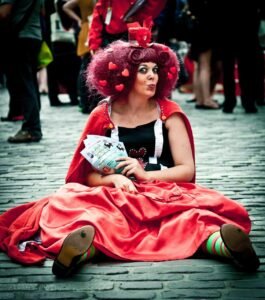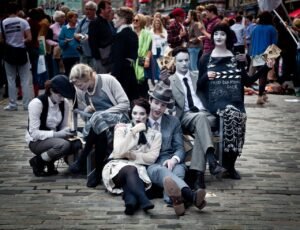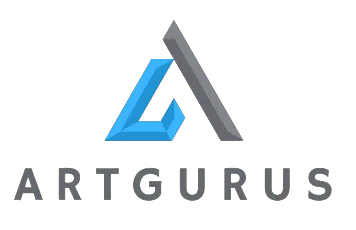Introduction
Every summer, the historic city of Edinburgh transforms into the world’s most vibrant stage. Streets echo with the sounds of laughter, music, applause, and spontaneous performances. Artists from every corner of the globe gather to showcase their craft, and audiences flood in to witness something unforgettable. Welcome to the Edinburgh Festival, more than a single event, it’s a month-long cultural phenomenon unlike anything else.
A Festival
When people refer to the “Edinburgh Festival,” they’re usually talking about a collective of festivals that take place in Scotland’s capital during August. The most famous of these is the Edinburgh Festival Fringe, the largest arts festival in the world. But it’s just one part of a sprawling cultural tapestry that includes:
- Edinburgh International Festival (EIF): Showcasing world class performances in opera, music, theatre, and dance.
- The Fringe: Open-access, experimental, and anarchic, anything goes.
- Edinburgh International Book Festival: A haven for literature lovers.
- Royal Edinburgh Military Tattoo: A dramatic and patriotic spectacle of military bands and dancers.
- Edinburgh Art Festival: Scotland’s visual arts bonanza.
Each of these festivals brings a unique flavour, yet they all blend seamlessly to create one unified cultural celebration.
Historic Background
The Edinburgh International Festival was founded in 1947, in the wake of World War II, as a gesture of international cooperation and healing through the arts. The goal was noble: to “provide a platform for the flowering of the human spirit.”
But something interesting happened that same year. A handful of theatre groups, uninvited and undeterred, showed up anyway to perform in smaller venues around the city. They weren’t part of the official festival program, but their performances were lively, provocative, and drew enthusiastic crowds. This rebellious spirit birthed what is now known as the Edinburgh Festival Fringe.
Today, that rebellious fringe has outgrown the original festival in scale, but both co-exist in harmony, representing the structured and the spontaneous, the elite and the accessible.
The Fringe
If the International Festival is the elegant, classical elder sibling, the Fringe is its loud, hyperactive younger one. With over 3,500 shows (and rising each year), the Fringe features everything from stand-up comedy and experimental theatre to drag, magic, cabaret, storytelling, and street performances.
One of the Fringe’s defining features is that it’s open-access. Anyone with a show and a venue can participate, no curation, no selection committee. That means you might stumble across the next Phoebe Waller-Bridge or Eddie Izzard (both Fringe alumni), or you might sit through something utterly bizarre. And that’s the point.
Shows take place everywhere: in theatres, pubs, cafes, bookstores, basements, back gardens, and even on buses. Street performers line the Royal Mile, turning every walk into a potential performance.
The Atmosphere
For the entire month of August, Edinburgh buzzes with an unmatched energy. The city’s population gets more than double, with over 500,000 visitors descending to experience the magic. Pubs overflow with post-show chatter; impromptu performances can break out at any moment.
It’s not uncommon for a comedian to perform five or six times a day. You’ll spot actors pacing outside venues, going over lines. Reviewers rush between shows, notebooks in hand. Audiences adopt a sort of festival stamina, laughing at one show, crying at the next, and catching late-night performances that end close to midnight.
It’s exhilarating, but not for the faint of heart. Performers call it a “creative marathon.” For audiences, it’s a cultural buffet, overwhelming but delicious.
Beyond the Fringe

While the Fringe often gets the spotlight, the Edinburgh International Festival (EIF) provides a rich contrast. Curated and prestigious, the EIF invites top-tier performers from across the globe. Think world renowned orchestras, opera singers, and avant-garde dance troupes. It’s where you go for elegance, sophistication, and deeply moving art.
Meanwhile, the Edinburgh International Book Festival, held in the charming Charlotte Square Gardens, offers something more cerebral. Authors from around the world come for panels, debates, and intimate conversations. It’s a place where Nobel laureates sit beside debut novelists, and every reader finds their tribe.
The Royal Edinburgh Military Tattoo, held on the esplanade of Edinburgh Castle, brings its own unique brand of spectacle. Think pipers in full regalia, fireworks lighting up the castle backdrop, and an international cast of military and civilian performers. It’s patriotic, theatrical, and moving, especially when you hear “Auld Lang Syne” echoing across the city.
And let’s not forget the Edinburgh Art Festival, which spans galleries, pop-up exhibitions, and public installations across the city, showcasing the best in contemporary visual art.
A City That Becomes a Stage

Edinburgh is a beautiful city year round, but during August it becomes something else entirely: a living, breathing performance space. Its medieval closes, cobbled streets, and gothic architecture form the perfect backdrop for a month of wonder.
Venues spring up in every conceivable location, church halls, underground vaults, college classrooms, shipping containers. The city’s geography, its hills and closes, means that every corner holds a secret; every stairway might lead to a hidden gem.
Tips for First-Time Visitors
If you’re planning to attend the Edinburgh Festival, here are a few tips:
- Book accommodation early: Prices soar, and places fill up fast.
- Be spontaneous: Leave space in your schedule for last-minute shows.
- Use the Fringe app: It’s invaluable for finding what’s on and navigating the chaos.
- Flyering works: Talk to performers on the Royal Mile; they often have great recommendations.
- Pack for all weathers: Scotland in August can mean sun, rain, and wind, all in one day.
The Lasting Impact
For artists, the Edinburgh Festival can be a launch pad. For audiences, it’s often life-changing. Many speak of the “Edinburgh effect”, the way it rekindles a love for live performance and the transformative power of art.
In an age where screens dominate and attention spans dwindle, Edinburgh reminds us of the joy of gathering in a room (or a tent, or a basement) to watch someone tell a story, sing a song, or take a risk.
Conclusion
The Edinburgh Festival is not just an event, it’s a state of mind. For one magical month, it feels like the entire world is gathered in one city to create, perform, and celebrate. Whether you’re an artist, an audience member, or simply an adventurer looking for inspiration, Edinburgh in August is an experience you’ll never forget.
Come for the shows. Stay for the spirit.
Top 10 Must-See Attractions in Edinburgh

https://t.me/s/reyting_topcazino/27
This is a very good tips especially to those new to blogosphere, brief and accurate information… Thanks for sharing this one. A must read article.
https://t.me/s/reyting_topcazino/12
https://t.me/s/reyting_topcazino/17
https://t.me/iGaming_live/4698